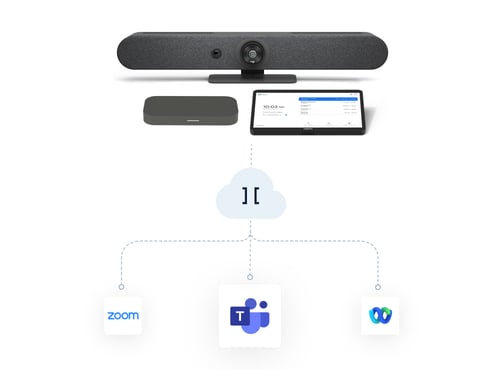In 2018, businesses were increasingly experiencing their workforces becoming more dispersed and mobile. This not only applies to employees but the key stakeholders and customers as well.
The need for better collaborative solutions to keep up with a more global industry ecosystem is a crucial factor to keep in mind for your teams to stay connected and keep up collaboration and innovation.
1. Huddle rooms
So what is a huddle room, you may ask? The answer is: “Any small meeting room or space that is well-equipped with technology, allowing small teams of people (usually around 5-12) to come together and collaborate in a private place.”
And now you may think, why is that so fantastic? The answer is: It provides for collaboration with minimal distraction as it is a closed-off room offering private space for discussion and idea sharing. Hence, it brings your team closer together.
Spontaneity is important to keep in mind as brilliance waits for nobody. Huddle rooms let you jump in whenever you want and start working as soon as the creative juices flow. Meaning you don’t have to go through the sometimes hassle of booking processes.
2. Different types of meetings
The way we meet is changing. We are witnessing more on-the-fly collaboration which is not always scheduled, even. This calls for setting up meetings faster, easier, and on different devices.
We also see the need for more group participation in the meetings - meaning meetings are led not only by one person but also by everyone. This means collaboration tools are more vital than ever to enable this new meeting style. They should be simple and easy for anyone to use - that is, it should be easy to schedule and join.
This can be done with a “one button to push” function to schedule meetings. By doing so, there’s an address created, and the software then scrapes the address, syncs with the calendar and invites the meeting room.
3. Legacy infrastructure facing end-of-life
As much as cloud services are growing - many companies still use legacy hardware, meaning they also have legacy infrastructure. And now, these technologies are facing end-of-life as the cloud is taking over with the need for entirely new gear to upgrade. It will not kill the legacy enterprise hardware sales, at least not yet.
Hardware still matters, and now you must decide whether to register your infrastructure to the cloud. By doing so, you be able to benefit from various cloud traits:
- Flexibility - working anywhere and from any device.
- Scalability - automatically happening in the cloud.
- Ease of use - for everyone in your company, regardless.
- Cost-effectiveness - as the requirement for upfront investment in hardware is zero
4. Wireless meeting room
Imagine not having to deal with cables or adapters when setting up a meeting, connecting your presentation, or showing something else from your screen. That’s a wireless meeting room for you.
Anyone can connect their devices wirelessly - only a simple app or caller ID is required. You can even join remotely from anywhere in the world.
5. Virtual and augmented reality
Let’s take a step further. While solutions for cloud collaboration bring people and teams together, virtual and augmented reality takes it to a whole other level.
It will allow collaboration and meetings to have an even more significant part in the work-life as things can be explained in a more detailed and real-life way, making the experience far more immersive.
This kind of technology can make the feeling of being disconnected disappear. A report from Goldman Sachs stated that the market of virtual reality and augmented reality combined is growing tremendously, with the estimated market size going from $80B to $182B by 2025.
Pay attention to the collaboration trends 2019 to reach your business goals and stay ahead of the game. Your competitors are most likely keeping up, and so should you.
- Digital transformation





